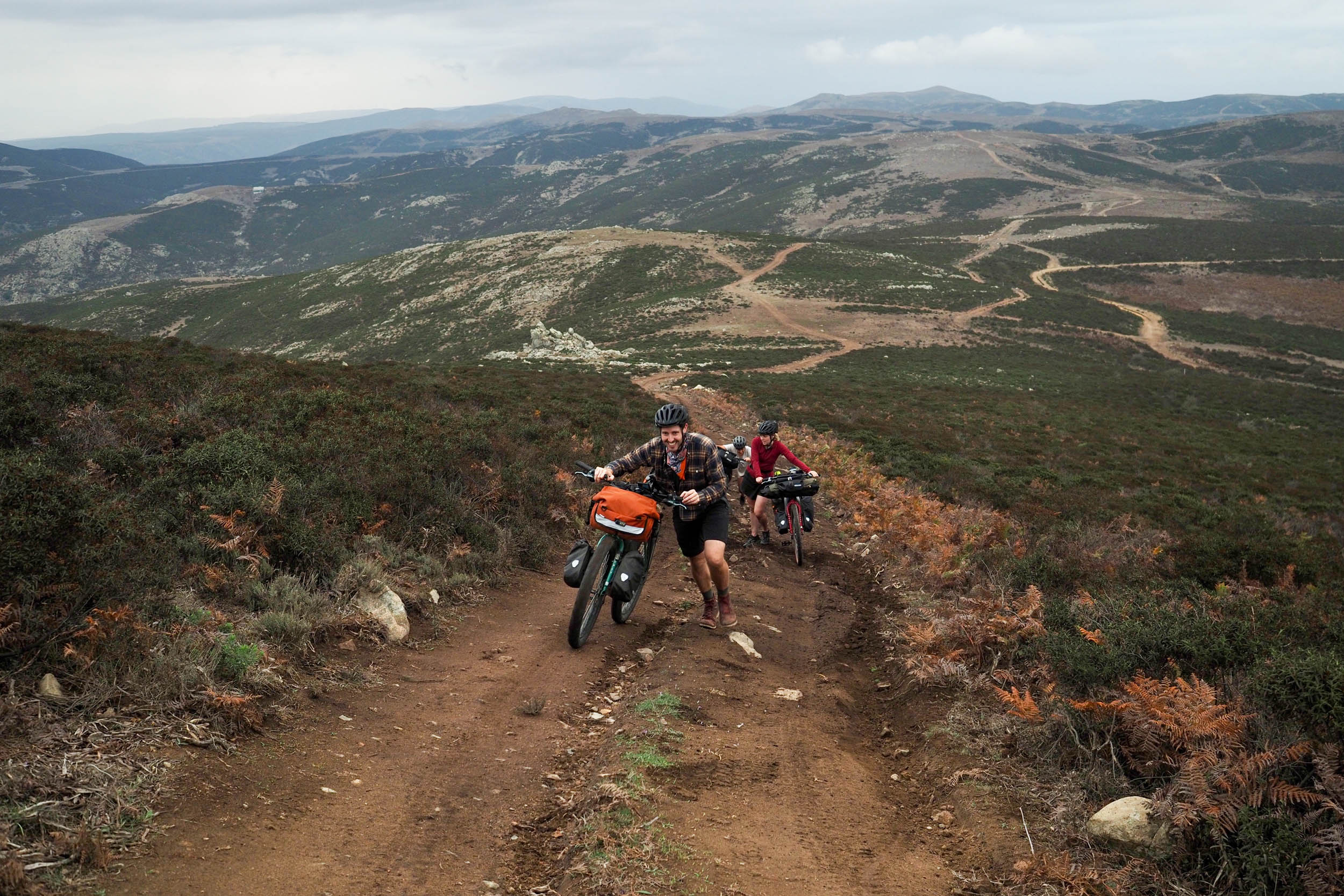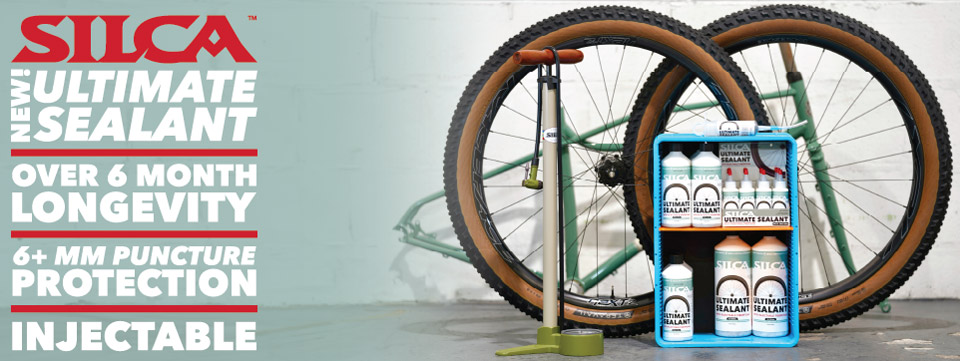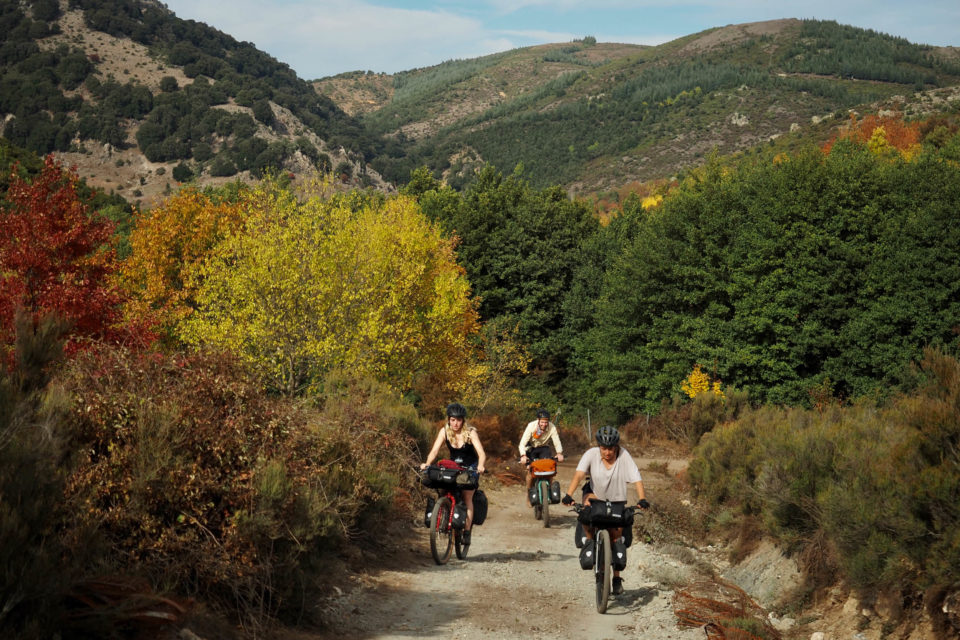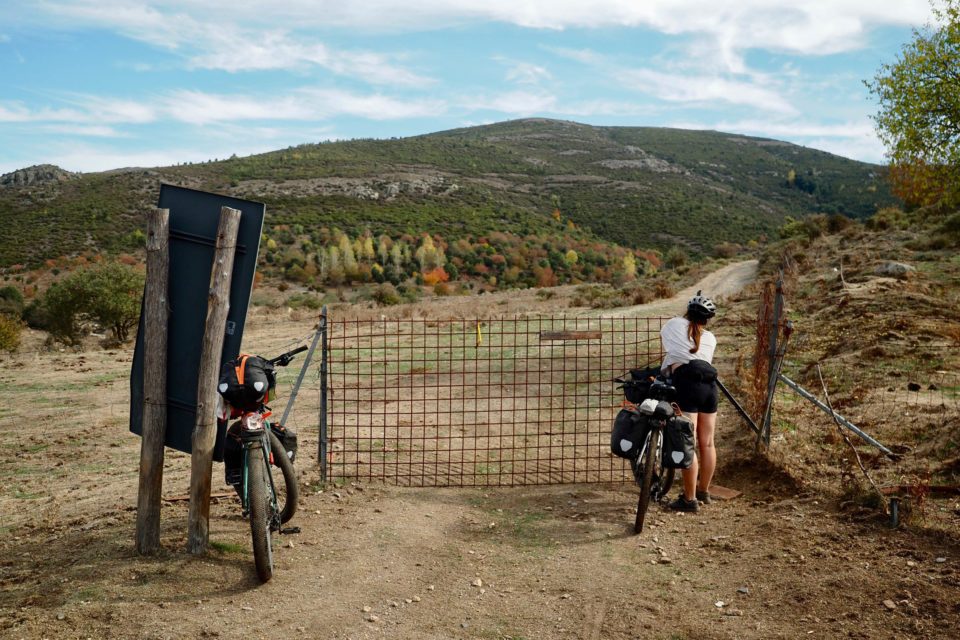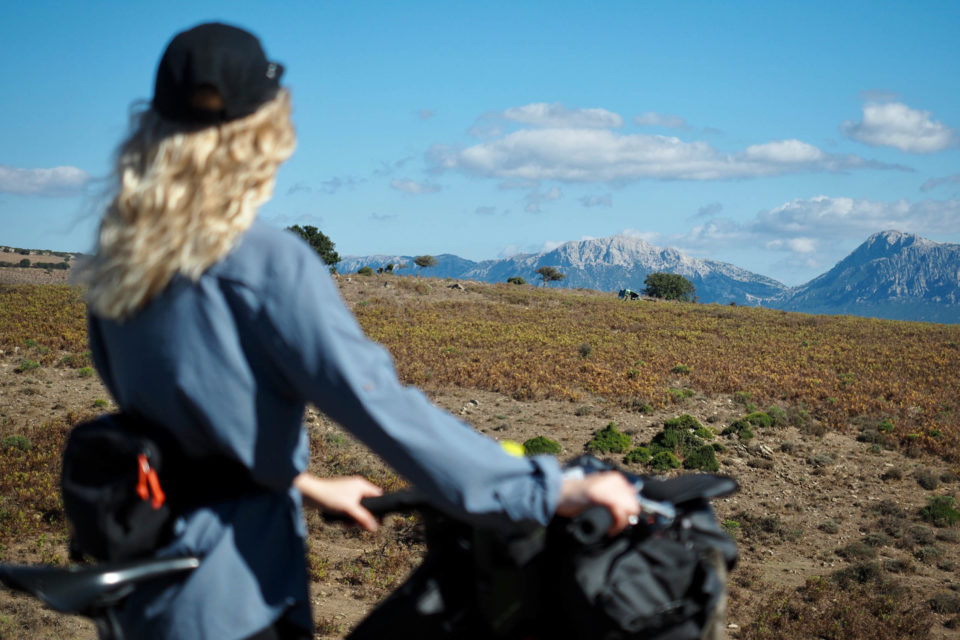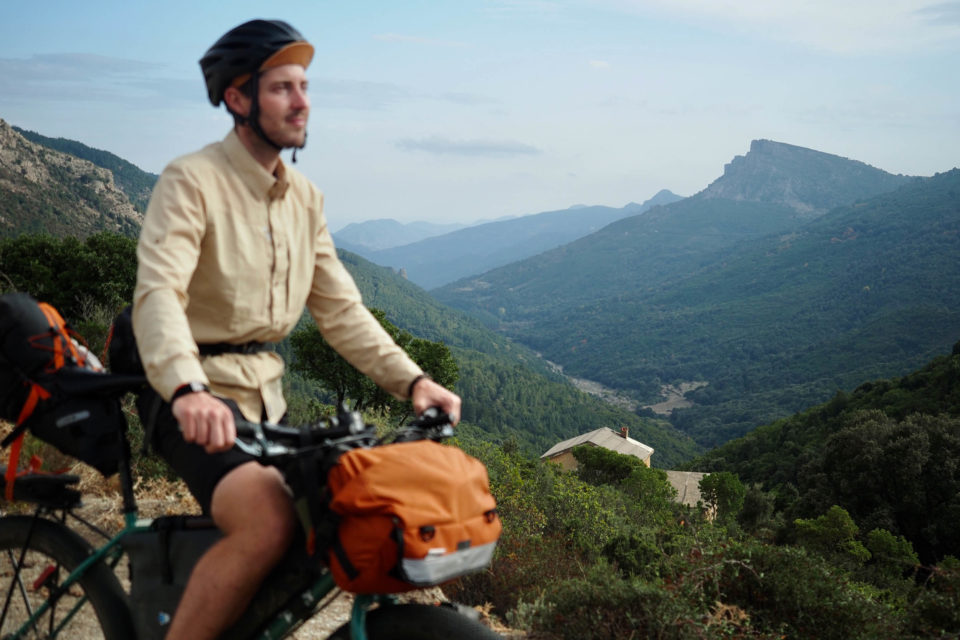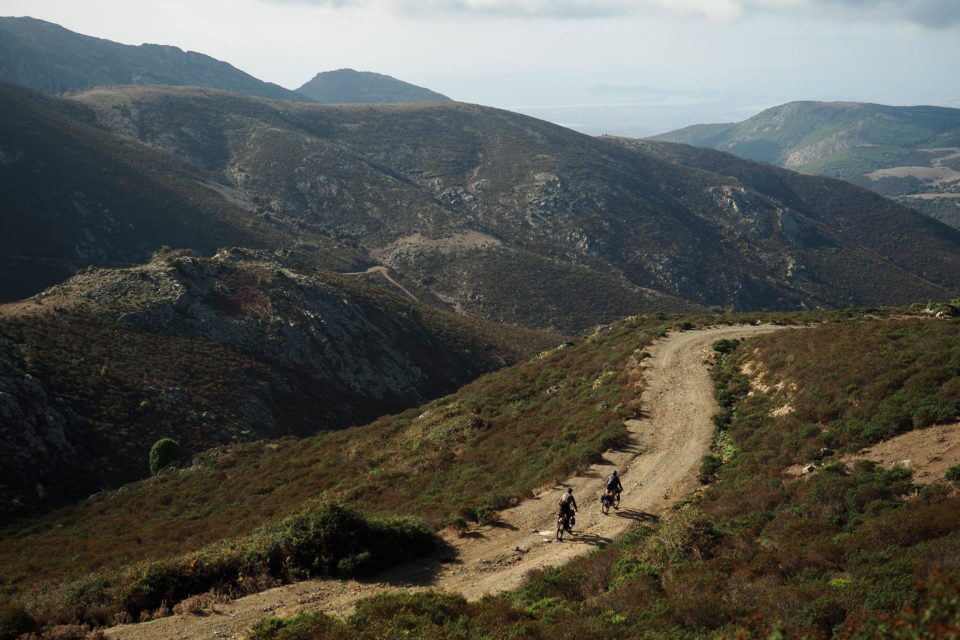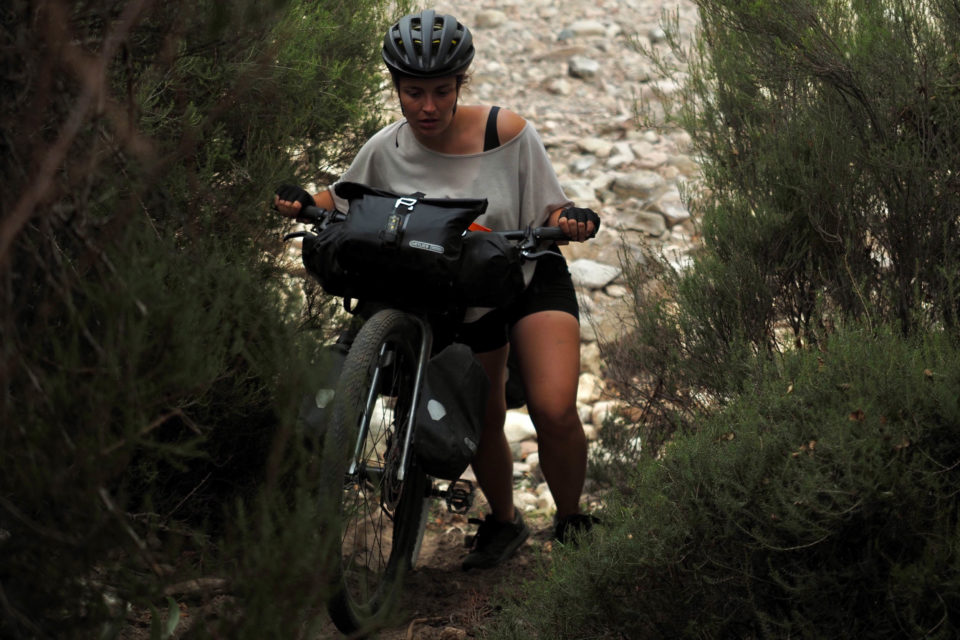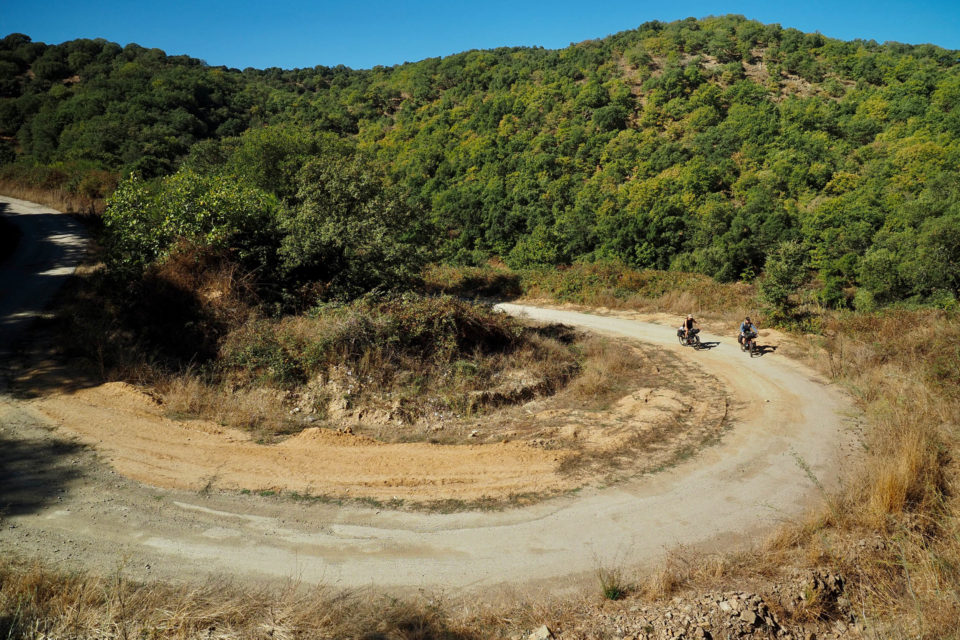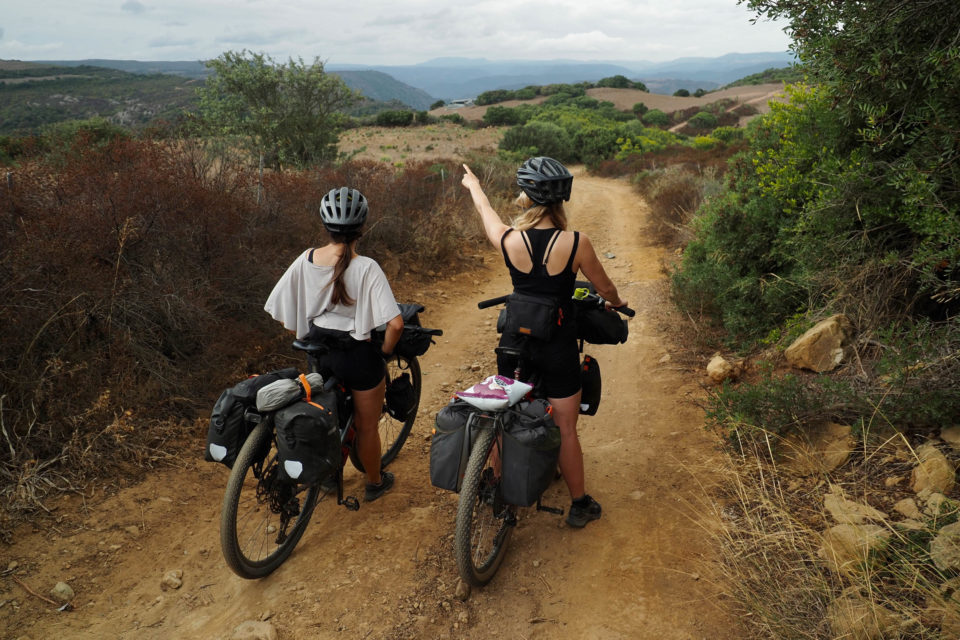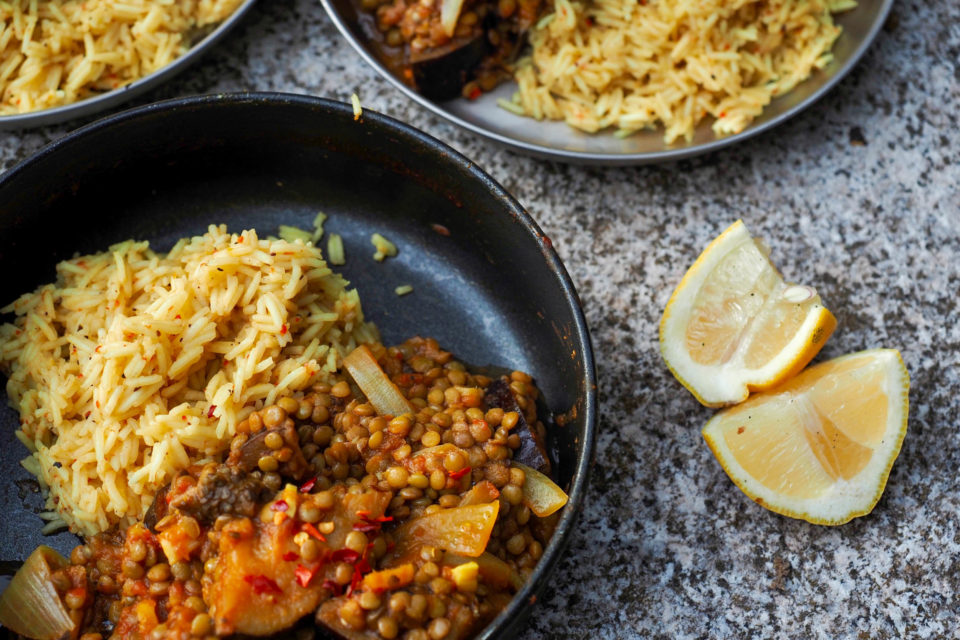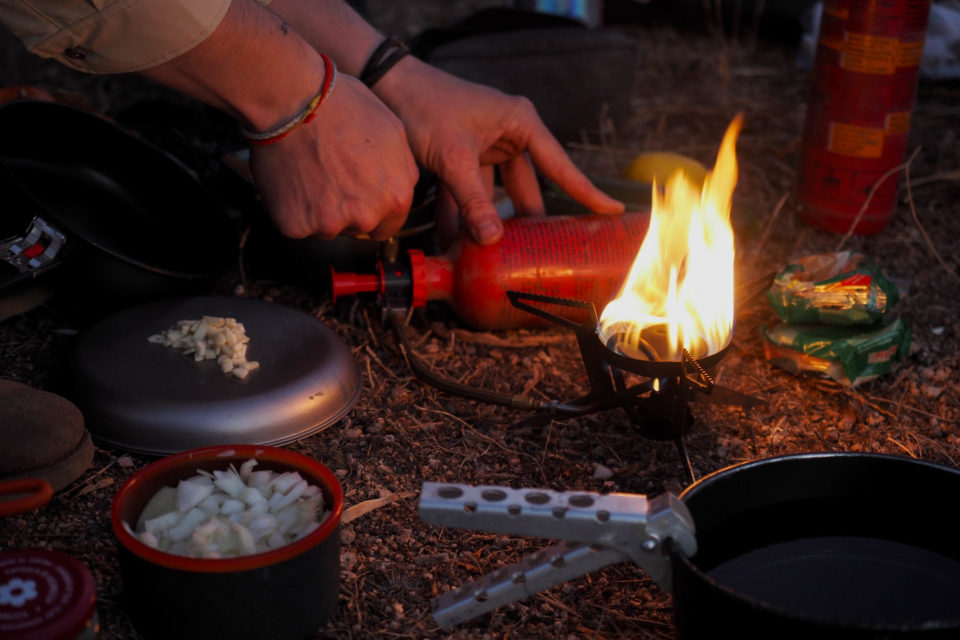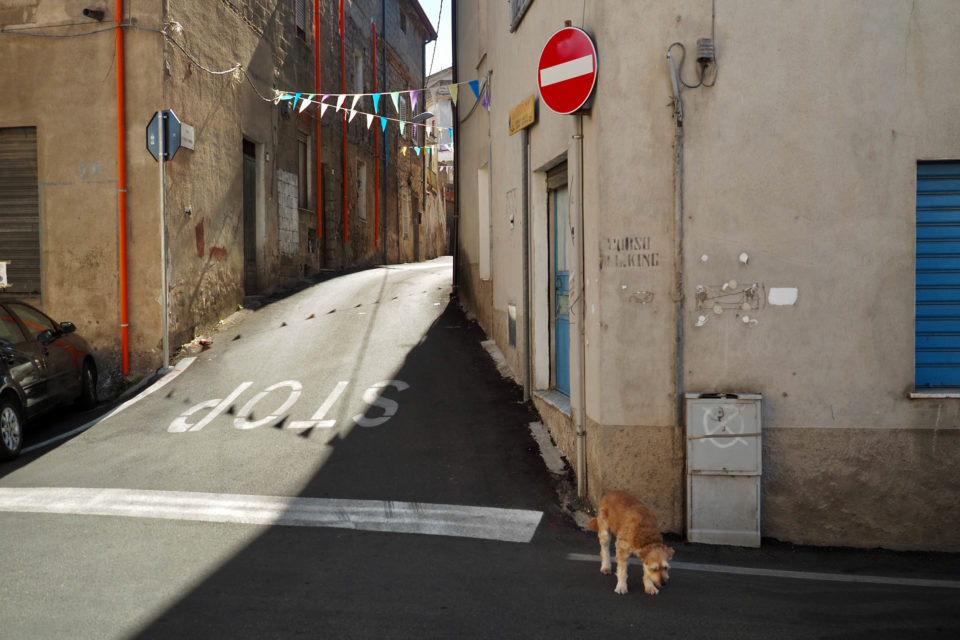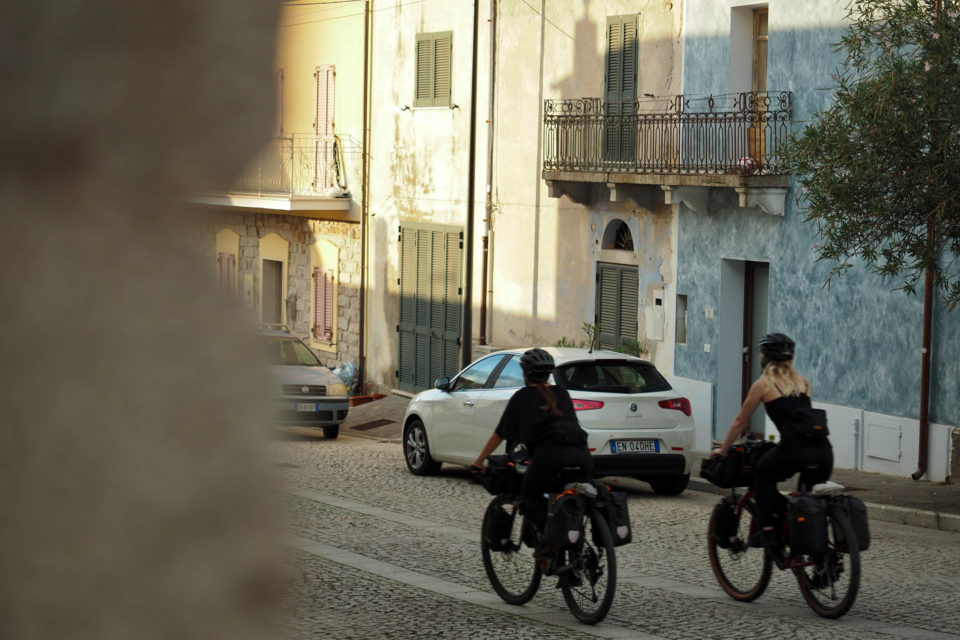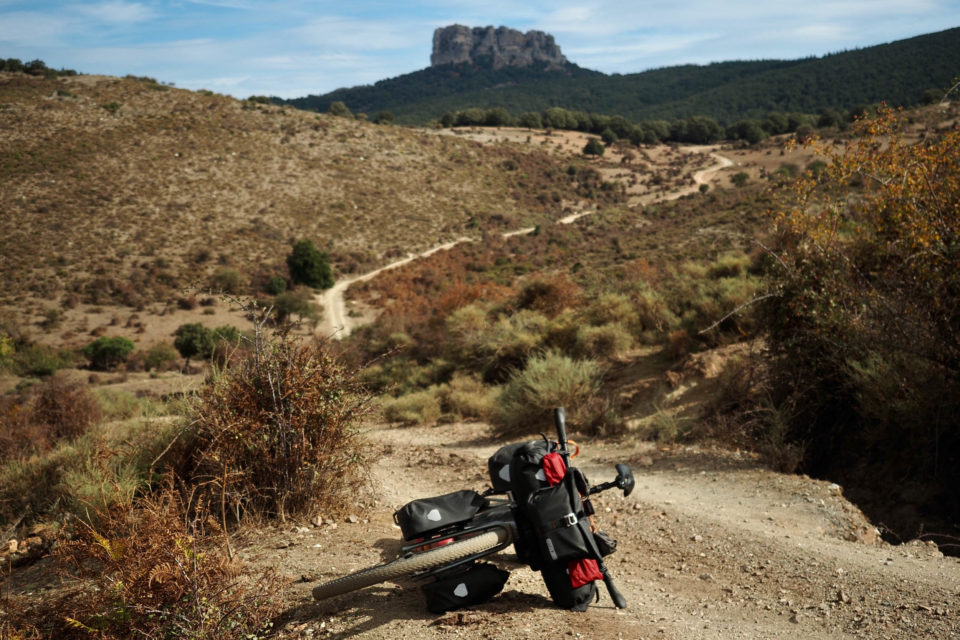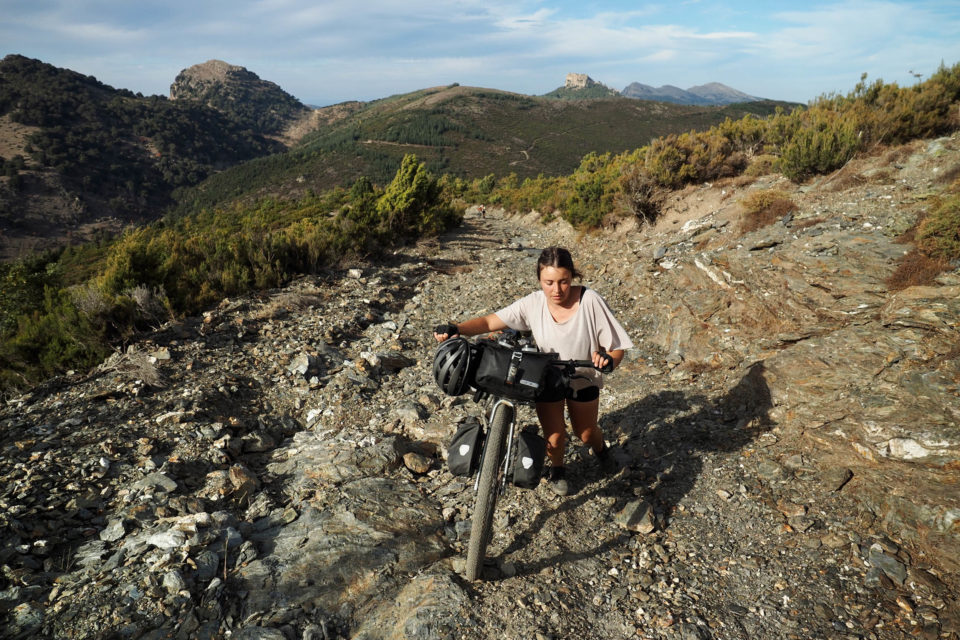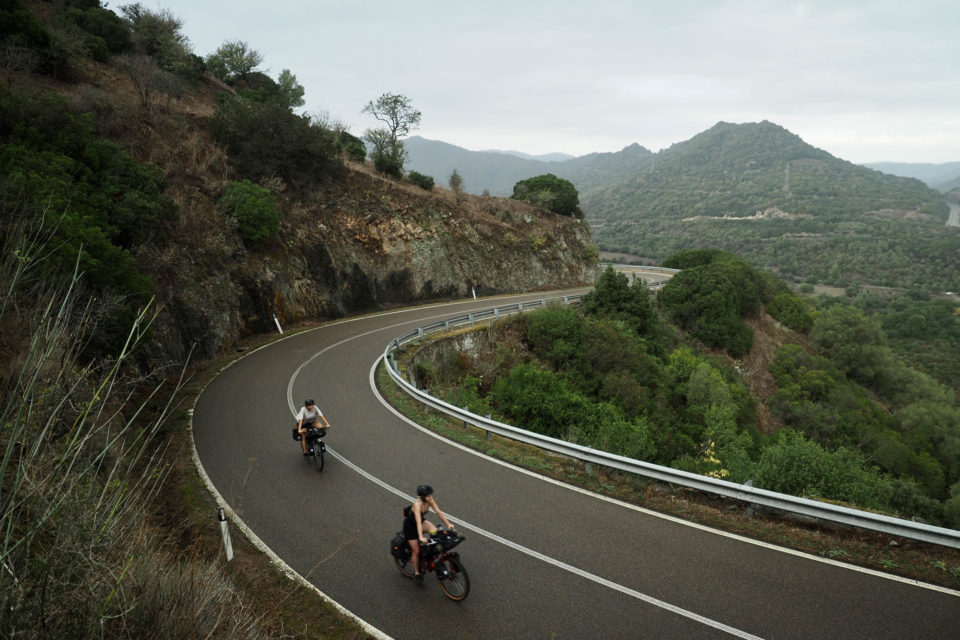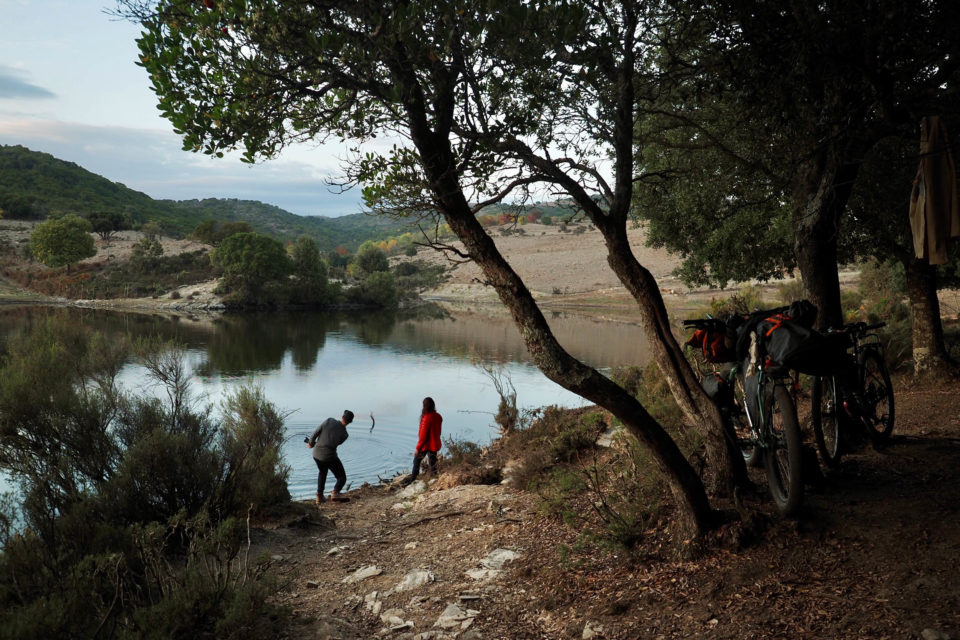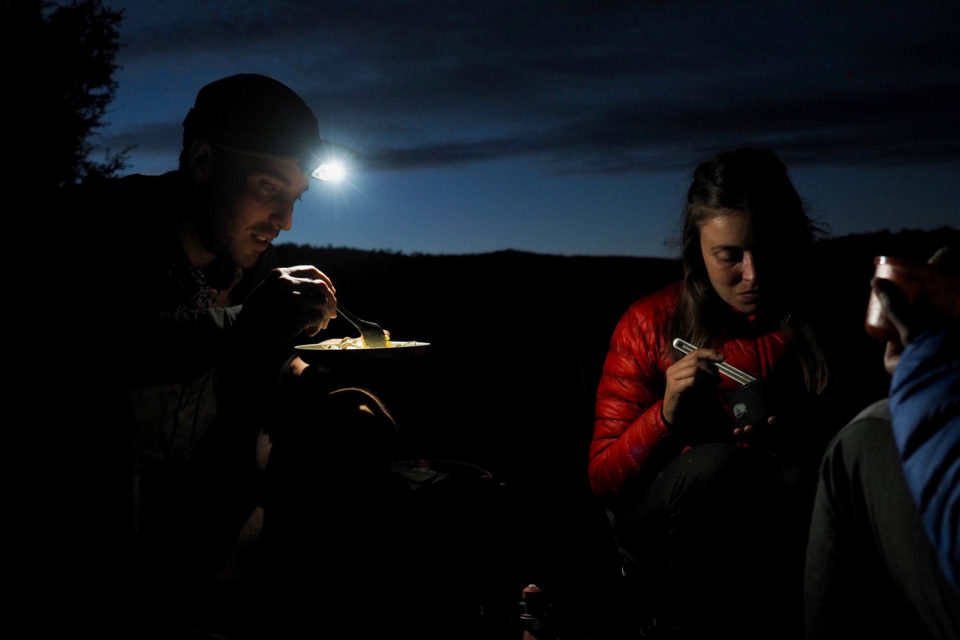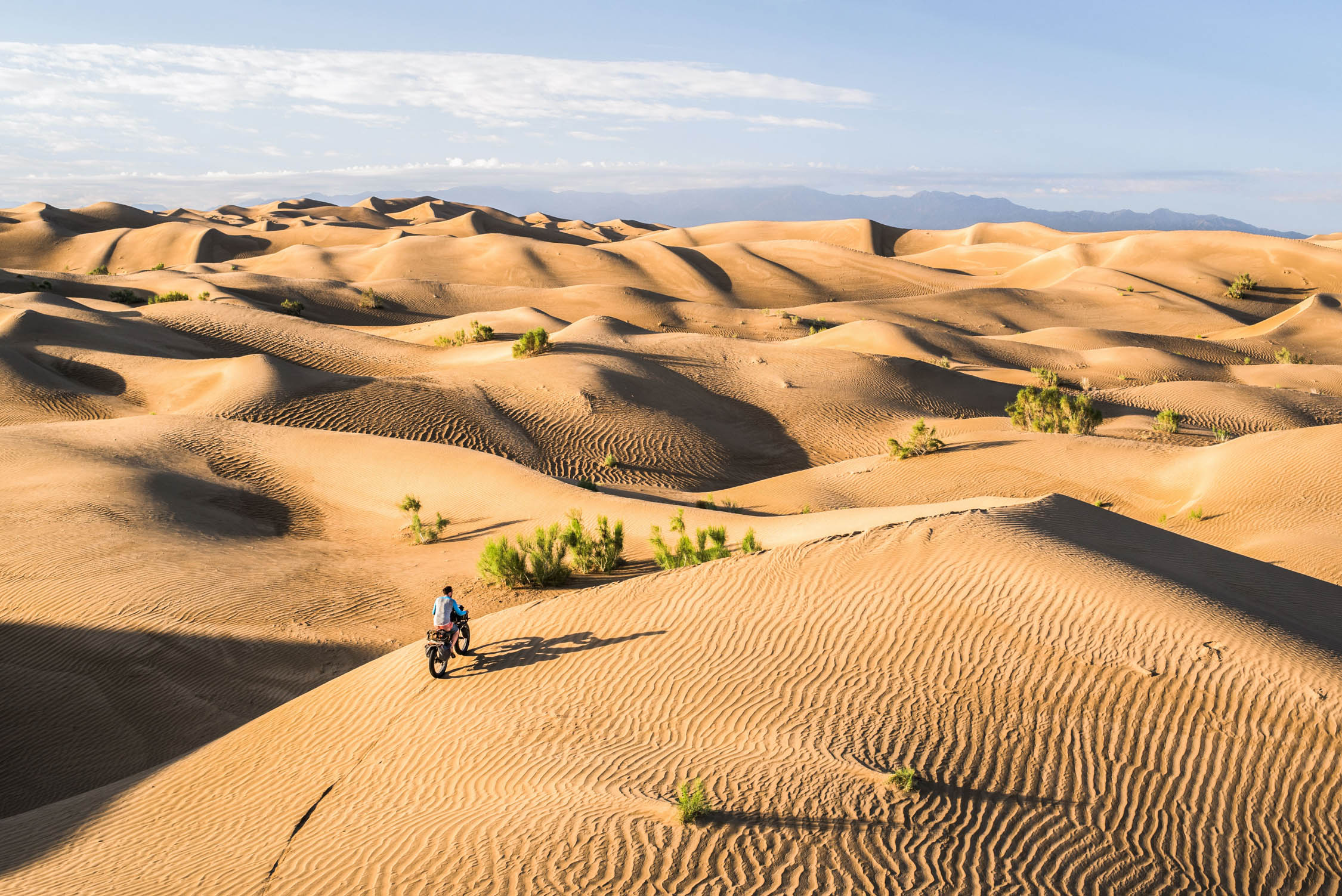A 10-Day Journey on the TranSardinia
Tristan Bogaard and Belén Castelló finished their 2021 riding season on the TranSardinia, an underdeveloped route through the island’s rural center, and they put together a pair of in-depth video reports along the way. Find both videos here, plus a lovely gallery of images and some written thoughts about the route…
PUBLISHED Jan 6, 2022
Words, photos, and videos by Tristan Bogaard (@tristanbogaard)
Throughout the summer season of 2021, my partner Belén and I tackled a bunch of unbelievably good bikepacking routes, and we also got to design a few on our own. We cycled and pushed each of these with a fresh sense of adventure whilst documenting them as best we could. We started in June with the Asiago Loop in northern Italy and soon after the Slovenia West Loop, connecting the two by train. We then designed a track in the Kamnik-Savinja Alps, as well as one in an Austrian-Italian region, which you’ll soon hear more about. Afterward, we hike-a-biked most of the tough yet impressive terrain the Wolf’s Lair route guided us through to continue our European summer with a self-made track on the island of Corsica, slowly flowing into fall.
By the last sunset of the summer season, there was one last ride left in our planning. It was a ride bound to be far more challenging than any of the ones we’d ridden in prior months due to its shifting position and tough surfaces riddled with spiky foliage, farmer’s fences, and gnarly singletrack. Luckily, before this year’s riding season had even started, we’d found ourselves in a new friendship with Sam Rice (@adventuresbycycle) and Becky Norman (@becbycycle) through our newest book, 50 Ways to Cycle the World, and they’d asked to join us on one of our bikepacking trips. Having already been on a few with other friends, we agreed to this exciting opportunity to get to know each other better. So, we met at the airport of Olbia, Sardinia, in mid-October, ready to discover what might be one of Europe’s most forgotten routes, the TranSardinia.
The TranSardinia was created by Giorgio Pupillo in 2009 and guides those brave enough to ride it through the heart of Sardinia. This island, compared to what we found on Corsica, has a huge expanse of rural farmland at its core, which remains largely undiscovered because tourists usually veer toward the island’s beaches. The Corsican natural environment made it extremely difficult to ride anything else than a collection of asphalt roads due to the lush, dense vegetation that covers the entire island, whereas Sardinia’s upper core is exposed to thousands of little sand tracks, muddy paths, rocky singletrack, and hundreds more gravel roads for farmers to keep an eye on their flocks of sheep or herds of cattle.
If you’re reading this here on BIKEPACKING.com, it probably means you know and love riding in rural landscapes, and that was exactly what we came to Sardinia for. As this route is now more than 12 years old, you’d expect it to have a fair bit of following—people riding it on at least a monthly basis or some kind of tourism committee using it as a way to attract visitors to the island. Sadly, this isn’t the case. And as we learned along the way, the route has a long way to go before it can be truly recommended. Being the undiscovered Mediterranean gravel paradise that Sardinia is, the TranSardinia route could eventually bring in many visitors from all over Europe.
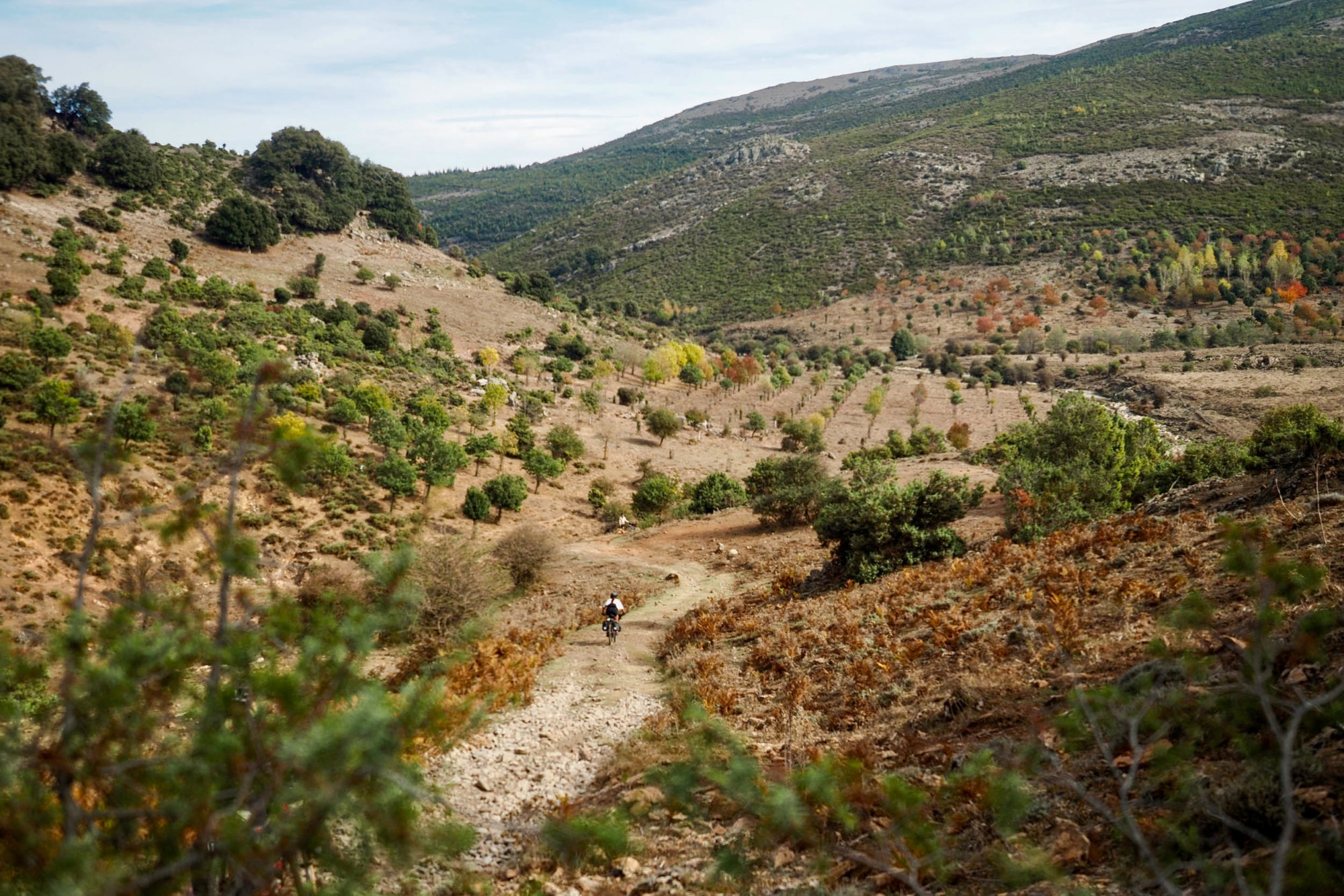
But let’s take a step back to the beginning of our ride. Sam and Bec landed by plane in the morning, and Belén and I cycled out to pick them up and start the trip from a small statue near the ferry docks. The original TranSardinia route starts and finishes at the docks of Olbia and Cagliari, but we decided on slightly more ceremonial landmarks. The route was loaded onto my GPS, a bike lane escorted us out of the city, and before we knew it, we were cycling through the countryside. Even the largest Sardinian cities are small by comparison, making it easy to escape their streets and seek a more natural environment. But on your first few days of the ride, you’ll swerve in between a lot of farmland, pastures, olive groves, and vineyards from one cute town to the next. The real natural beauty comes further south.
On the second day, right after breakfast, we touched base with a dirt track that funneled us into a section of bushy singletrack that nearly trapped us in its grasp. It was the first sign that sticking to the original TranSardinia route might turn out to be a dangerous endeavor. A large, fenced boulder lay right in the middle of an already devious little path and required us to clear the fencing and lift each of our bikes over. Fortunately, the path improved after this little hiccup, and although some spiky bushes tried to stop us from continuing further, we championed our way through and eventually found a clearing from which we could cycle again.
This is where things started to get really good, at least for a stretch of about four kilometers. We hit a gate at that point, which was padlocked and had “no trespassing” signs secured to the iron rods on its sides. At the same time, and perhaps in a stroke of weird luck, the clutch of Belén’s derailleur began failing. After a quick assessment by Sam—who was a mechanic once—we decided to not take risks and head back to Olbia in search of a speedy repair.
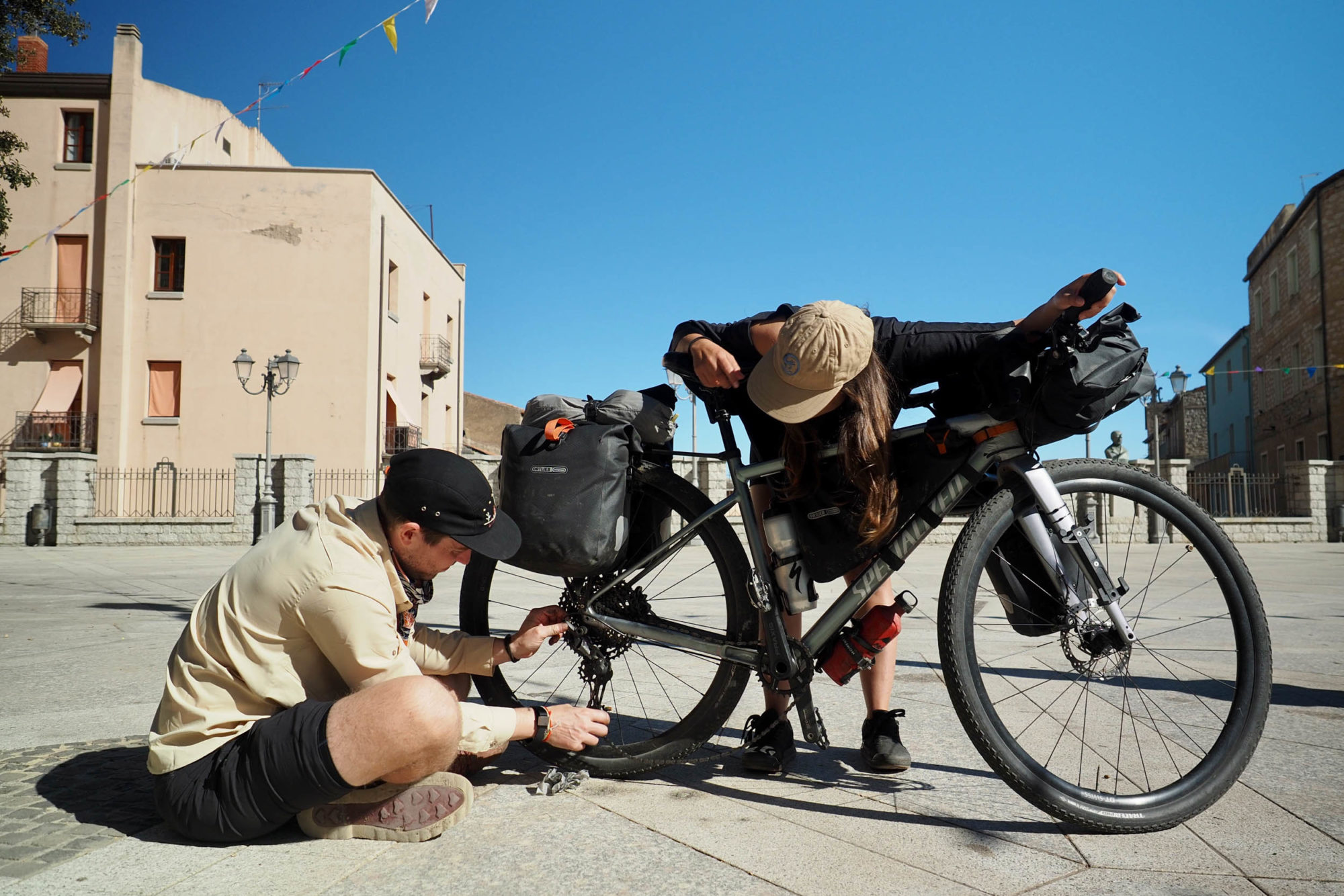
The next morning, with the sun rising over the worn streets of the city, we stood in line at a local bike shop, got the clutch fixed, and caught a train close to where we’d left the route. This affair affected the amount of time we had planned to cover the route, which meant we had to skip the section after the padlocked gate (we didn’t really have a choice there anyway) and find a way to link up with the continuing route in a reliable manner. No more fences or gates, please.
Between you and me, my partner Belén is somewhat of a route designing genius. This made adjusting the already tricky-to-plan TranSardinia route and mixing in our own riding desires a much easier task. Every time something wouldn’t go as planned, she saved our strength with an improvised itinerary that would put us back on track without too much of an ordeal. It was the way we succeeded in dealing with the impaired derailleur that had forced us to significantly modify our planned route.
As you’ll find out by watching the video series of this trip, there were also an abundance of flat tires—tubeless or tubed—and a few handfuls of padlocked gates blocking us from further entering the original route. Of course, there was also my ever-focused tripod-planting endeavor along every piece of pavement or gravel to capture the details of what we were up to on the island. In addition to the difficulties, as we rode, we also started to develop a shared friendship—undeniably the greatest treasure of any group bike ride.
Our fourth and fifth days were spent on a mix of dirt, gravel, and asphalt. Belén’s derailleur, although somewhat functional, still caused a drag for her on the uneven pavement, which is why we decided to mix things up a bit. The advantages of this strategy were already clear to us from previous trips: mix in a few quiet asphalted roads, and you’ll get an experience that’s more inclusive than the rural-only package. We rode through some interesting and culturally abundant villages, with typical Italian café’s open for treating any tired cyclist to some sweet treats and coffee. Taking a bit of pavement allowed for smoother riding, giving our bikes a break from the extremely rugged terrain of the official TranSardinia route.

Our reroutes also meant we could weave a few supermarkets into the route as well, essential to those of us who fancy doing a bit more cooking along the way. And lastly, the move away from 24/7 gravel travel allowed for some stunning wild camping spots. I know that might sound weird to some of you, but I’d never underestimate the practical sides of a seasonally abandoned picnic site!
Speaking of beautiful places to pitch, we really enjoyed the evenings on the island. We somehow managed to find an impeccable spot to wild camp almost every night, and Sam—who was also a chef once—cooked us the most delicious meals out of simple, nourishing ingredients we were able to purchase along the way. We’d all have our own rhythm as soon as we decided on a place, going into somewhat of an autopilot mode while executing each of our separate chores. Belén and Becky made our tents feel like home, Sam would spin up a scrumptious risotto or spicy aubergine curry, I’d film all of the activities. Then we’d all sit down together, chatting through the evening, addressing our thoughts and feelings to stay transparent with each other on how we were doing. Those moments made up the pillars of the trip, defining trust and connection and often happening under star-filled skies with the chirping of crickets lulling us to sleep.
Delightfully, we were able to pick up on much more of the official route during the days that followed our fifth night out, and the sixth day was a favorite for all of us. Towering rock formations that reminded us of Monument Valley, the bursting colors of fall foliage lighting up the scenery around us, and a lot of dirt, gravel, slate (and everything in between). On this day, we reached the highest elevation of our ride at 1,291 meters above sea level, which felt like an incredible achievement. Being out there and glancing over the nearby hills and mountains without noticing a single town or human settlement is always a satisfying experience. We took it in with shared Oreos and voiced our appreciation for the mixed pavements of the trip as we’d hike-a-biked for several hours to reach this barren place.
This rhythm of climbing, celebrating the climb, descending, savoring the descent, and yet again starting the next climb with a hunger for completion balanced out the following days. Once we’d conquered that highest point, everything started flowing in a similar manner. Moreover, while every day remained a new discovery, we’d gotten used to the rhythm of our crossing and what this route could throw at us. It made every ascent more predictable and each descent more enjoyable. We chatted more freely than ever and dug much deeper into our personal stories than during previous days. And the scenery just kept getting more impressive. I find it funny that once we all got used to the visual elements and profile of this bike route, we eased into it, embracing the everyday challenges more openly while feeling less tired at the end of them.
Still, the 10th day on the TranSardinia nearly killed us. Not literally, but let’s just say we felt incredibly relieved when Sam scouted out the most pristine camp spot of the entire journey. It sat just atop the final passage, allowing any spectator catching their breath to watch over the entire southern coastline of Cagliari and surrounding towns—eyeing the very finish we were riding toward the following day. That 10th day was made challenging by the almost endless amount of little climbs and is this the highest point? mental games that caught up with us during the late afternoon.

It started with a steep climb over a busy road and lots of riding over a vast plain of flat, dry, and typically Sardinian landscapes until lunchtime, with the next 10 kilometers taking up the rest of our daylight hours. We pushed, and pushed, and pushed up every next climb, knowing these would be our very last—whenever they’d end. The sky was draped with gray clouds and a fair but fleeting chance of rain the entire day, leaving only a few slithers of the setting sun as we reached the top of the final pass. While riding into the sunset, we sighed in unison. The TranSardinia had pretty much been conquered.
Of course, the last day of any ride through a beautiful place is the one you look forward to the least. But, in our case, the TranSardinia was such an immensely challenging experience that it felt incredibly liberating to make it to the end and sunbathe on the steps beneath the Duomo of Cagliari’s historic centre. We already had a fair amount of recent bikepacking trips under our belts, but this route was a uniquely tough and unforgiving adventure. And I can’t say it enough: it needs a ton of work in order to make it a manageable, stress-free itinerary for the great heaps of bikepackers it could certainly attract.
Since some of you reading this might be interested in giving it a try, here’s a list of some of the improvements this route needs to modernize it and have it live up to the near-perfect picture it gave us of rural Sardinia:
- Fix the flow. One too many locked gates or fences blocking a route section is enough to make any rider want to pull out their hair and retire to driving a rental around the island instead. It’s crucial that the right of way for riders on the TranSardinia is guaranteed, either by mandating an easy open-and-close system on each gate or working closely with the tourism board and landowners to make everyone aware of the route.
- Put up proper signage. The digital pilgrimage one has to undertake to find the right GPX tracks (those without locked gates) is far too complicated for the average person who just wants to spend their two weeks off enjoying Sardinia’s rural side. Clear signage made in collaboration with the Sardinian tourism board would be a huge step toward making the route more enjoyable to follow.
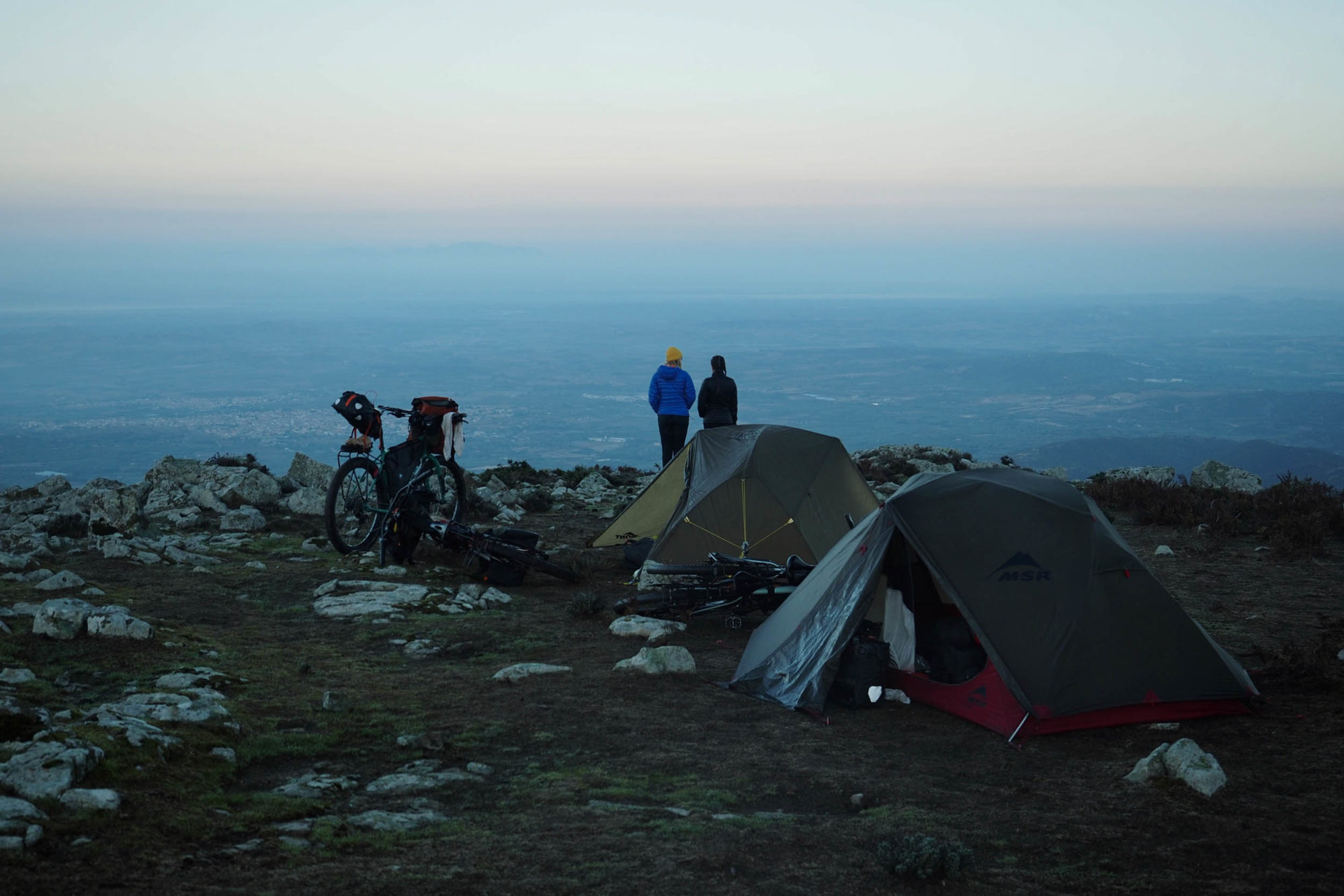
- A change in wild camping law. Yes, this might sound a little controversial to some, but since most cyclists wild camp their way through most bike rides, an exemption of sorts for those riding the TranSardinia, like how hikers and cyclists can file wild camping requests to the government of the Canary Islands, would be a big step toward making the route a more attractive one for those seeking adventure within European borders. Of course, it’d be essential to mandate leaving no trace in the process of sleeping under the stars.
- Rural accommodation. We’re aware of how difficult it must be to run a guesthouse, hostel, or cyclist-hotel, but as routes like Montañas Vacias have shown, a well-made bikepacking route has the potential to change the local economy for the better. This would require the above improvements to be completed ahead of any real financial interest for those running these sorts of businesses, but they’d only enhance the route further. We rode through with beautiful October weather, yet everything was closed.
And, as a little added bonus, here are four reasons why you should absolutely consider already riding the TranSardinia, even before the above improvements have been implemented:
- Italian island culture. Some of you have already experienced what it’s like to ride in Italy (perhaps through numerous fantastic BIKEPACKING.com routes), but we can tell you this: riding on an island that is secluded from the rest of the world yet still has cheap, tasty coffee on every street corner, historic Italian architecture, that typical passionate interaction only Italians will exhibit, all with a unique touch that only an island society can develop is worth coming over to Sardinia for.
- A rusty yet reliable local rail network with only(!) regional trains frequenting them and allowing the quick transport of one bike per person up and down the island. This means that in case your bike breaks down or something else forces you to steer off route, chances are you can cycle westward and find a train station relatively quickly, from which you can reach any of Sardinia’s biggest cities within an hour or two.
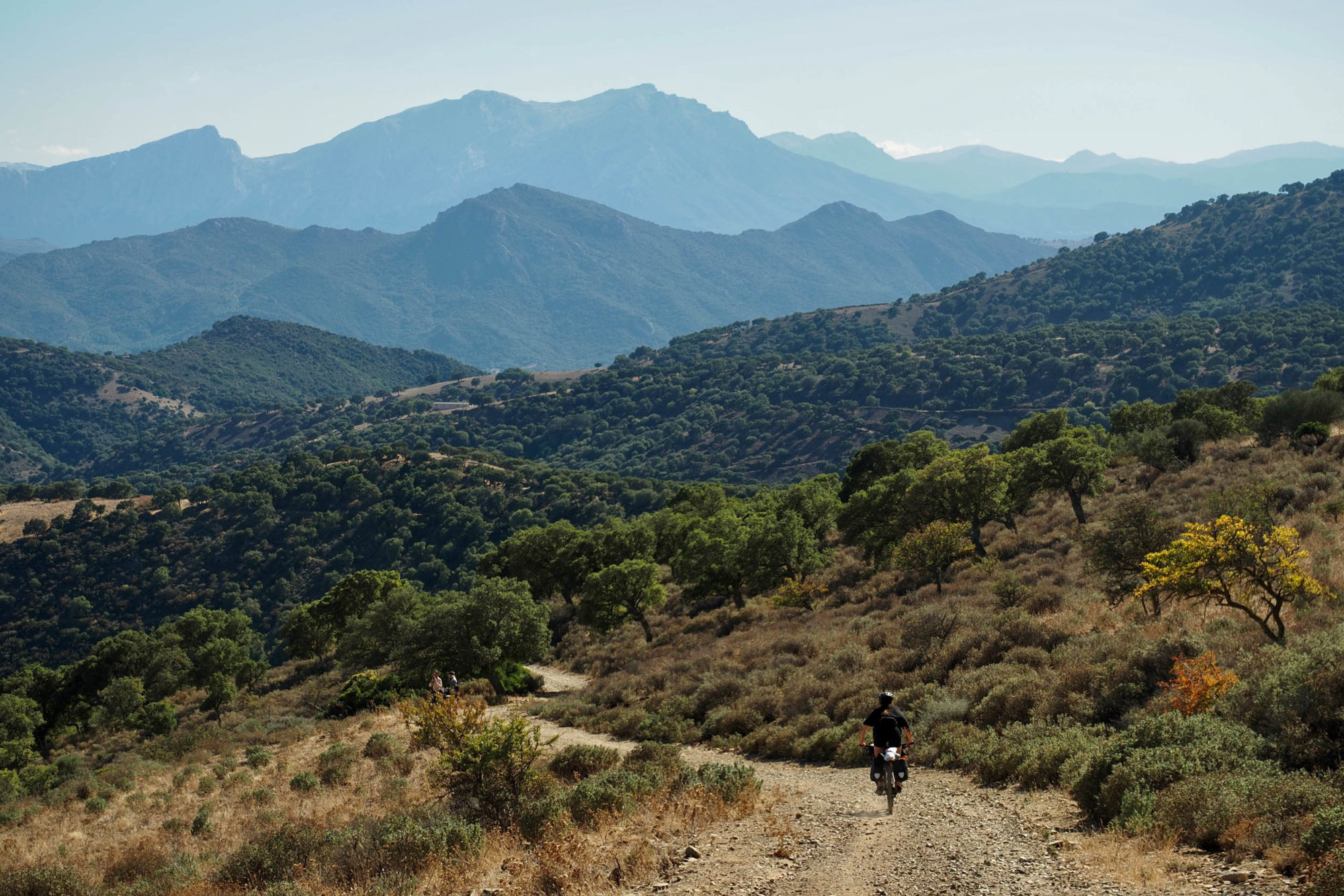
- The natural environment. As mentioned throughout the piece, Sardinia’s dry and rural yet spectacular natural scenery is worth the ferry ticket you’ll need to get there. Having the sea always close makes it easy to switch perspectives between the rocky and barren upper layer and lusher lower elevations. Yes, there’s a high chance of flat tires due to spiky bushes and thorny plants found all over the place, but the views you’ll be surrounded by every day make up for the challenges of reaching them.
- Easy to reach, difficult to find. With ferry connections from Spain, France, and specifically Italy, and major mainland train networks evolving to a more bike-friendly system, it’s increasingly easy to reach Sardinia with your bike. Yet, the island offers a flavor of natural environment, quietness, and disconnectedness found almost nowhere else in western Europe.
If you have any questions about this evolving route, feel free to reach us over on Instagram @tristanbogaard and @belletoscan.
Related Content
Make sure to dig into these related articles for more info...
Please keep the conversation civil, constructive, and inclusive, or your comment will be removed.







